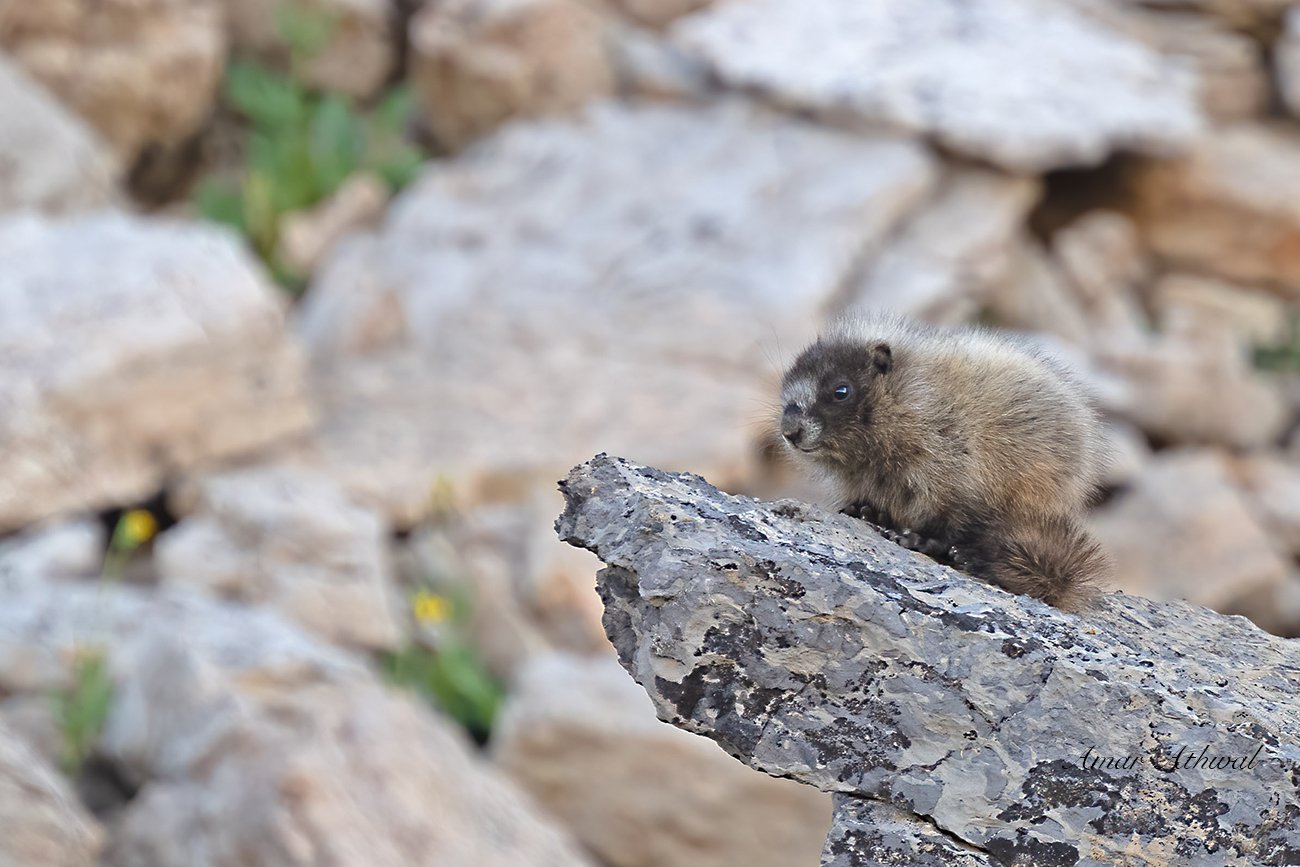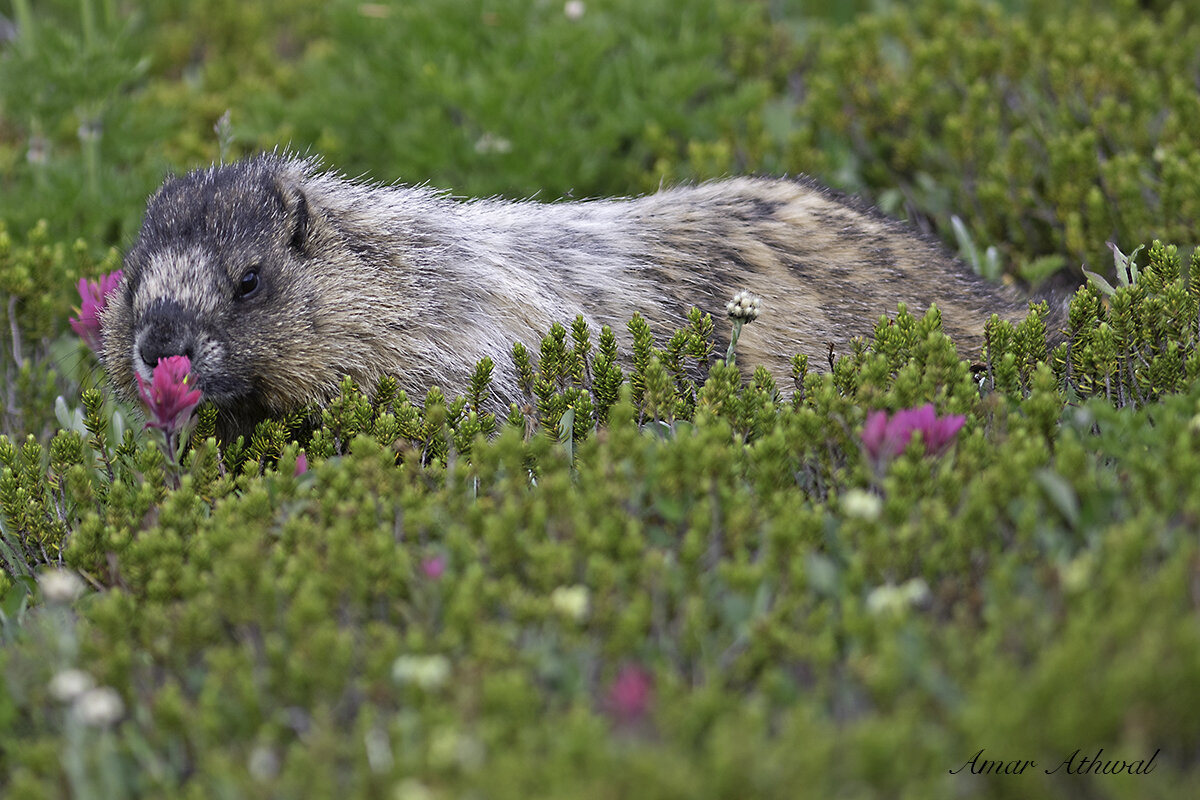Epigenetic changes are a chemical modification that occurs in DNA and can be used to measure aging by studying the blood samples of an animal. UCLA researchers while studying yellow-bellied marmots. They discovered that the biological aging of these marmots’ stalls during their hibernation stage and continues during the active season. During hibernation, the marmot only uses one gram of fat each day and with a lowered temperature, it feels like a cold rock. Well, a cold furry rock. This adapted way of surviving the cold months helps the yellow-bellied marmot live up to 15 years. Longer than expected for an animal of its body weight.
For us two-legged mammals, many of our species look at spending just one third of our time sleeping as a waste. But many researchers are studying the biological advantages of humans adopting hibernation for long-term space missions or for saving organs for transplantation.
For the young hoary marmot in the attached picture, it was not thinking about a healthy lifestyle. It was time to take a break from eating when it was spotted early one morning. It was less than two months old and the size of three pikas, showing the camera how cute it was.




